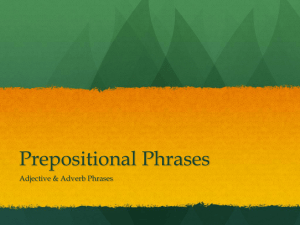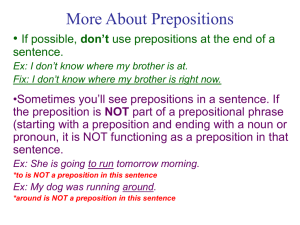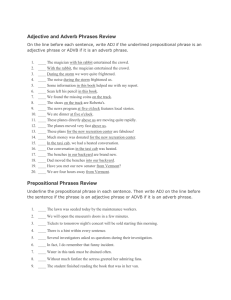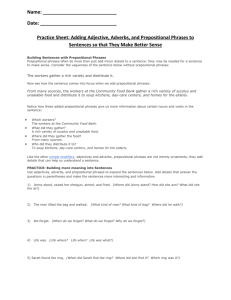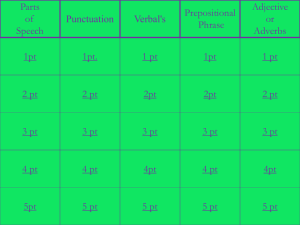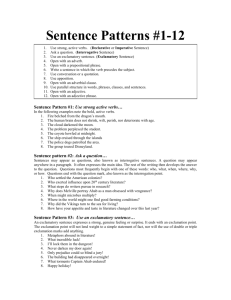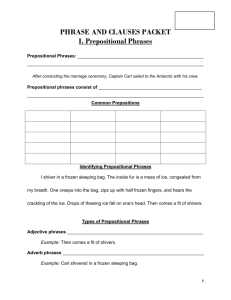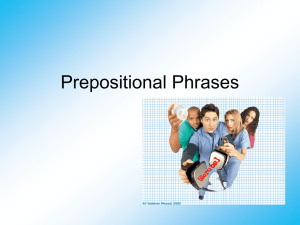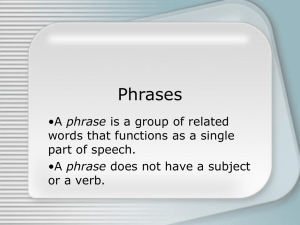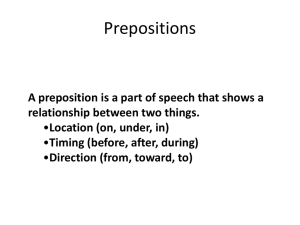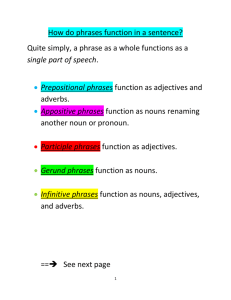Prepositional Phrases
advertisement
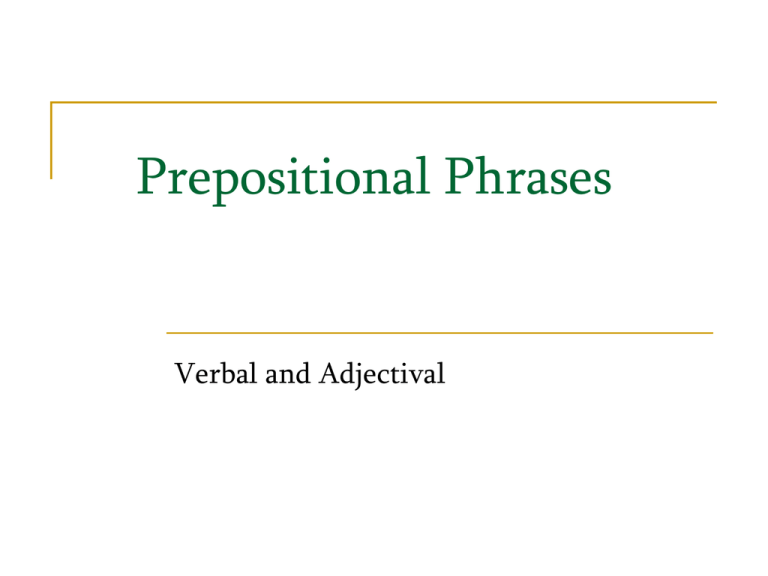
Prepositional Phrases Verbal and Adjectival Earlier in our grammar lessons, we learned about both adverbs and prepositional phrases. We are going to revisit both of these, put them together, and go into more detail. Adverbs were words that helped us know when, where, how, or to what extend a verb was happening. Example: Bob was running. When? Bob was running yesterday. How? Bob was running awkwardly. To what extend? Bob was running a lot. Where? Bob was running homeward. That last one answered where and I used a one-word adverb. Notice it sounded weird. We don’t usually use one-word adverbs for where (except for here and there, which are pretty general). Store-ward, school-ward, Sarah’s houseward. These all sound pretty awkward. We use a phrase most of the time to describe where. A prepositional phrase to be exact. So… Bob was going to the store. Bob was going to Sarah’s house. Adverb Phrases Because they are used like adverbs, they are called adverb phrases. Other examples: The dog went under the bed. The deer jumped over the fence. Other examples: The dog went under the bed. The deer jumped over the fence. The boy looked through the window blinds. Adjective Phrases However, prepositional phrases are not just used in adverbial situations—to help out verbs. They are sometimes used to help out with nouns. Because words that help with nouns are called adjectives, whole phrases that help modify nouns are called adjective phrases. Consider this sentence: Bob gazed at his picture of Sarah. Our prepositional phrase (of Sarah) helps us describe a noun. Particularly, picture. Here’s another: Sarah drives a car with spinning hubcaps. Our prepositional phrase (with spinning hubcaps) helps us describe car. Review So, in review, there are two types of prepositional phrases: adverb and adjective. Adverb phrases are a group of words that together modify verbs. Adjective phrases are a group of words that together modify nouns.
